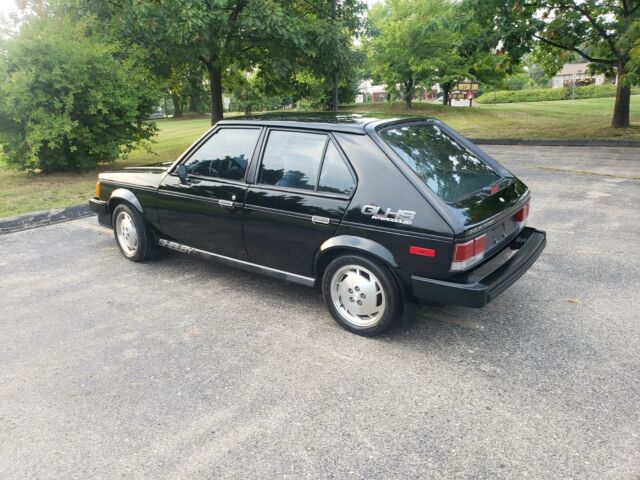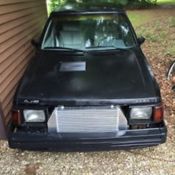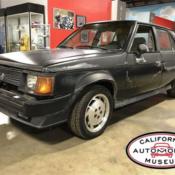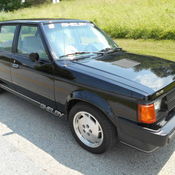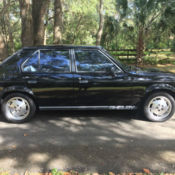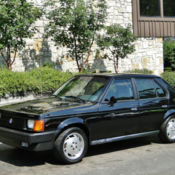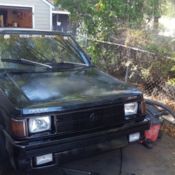1986 Dodge Omni Shelby GLHS Turbo GLH Serial 189 2.2L Turbo
1986 Dodge Omni
In my collection of 80's and 90's cars, this is one of the biggest head turners and conversation starters. Cars from this era are going up quickly as the baby boomers retire and Gen X'ers have saved enough to start investing in cars from their Era. I am selling this beautiful 1986 Shelby GLHS. I am a collector and bought the car from other collectors. It has spent it's life being very well cared for. I believe it's one of the lowest miles, cleanest examples still in existence! I even have the original window sticker. This 1986 GLHS is all original with no modifications, only normal maintenance has been done. Everything works perfectly as off the showroom floor, except the radio turns on but no sound! Serviced and working AC, and brand new brakes! This car has had one repaint in its past that is 9 out of 10. Interior is EXTREMELY nice 9.9 out of 10. I believe to be 2nd set if not original Goodyear tires in excellent condition. (pre-date codes). Has light window tint. Located in Ann Arbor, Michigan. Come inspect it prior to the auction close in my 10,000 SQ/FT heated warehouse.From Wikipedia - The '1986 Shelby GLH-S' was a modified Dodge Omni GLH, with changes made at the Shelby factory. They were retitled as Shelby Automobiles cars sold at select Dodge dealerships. GLH stood for "Goes Like Hell" and GLHS stood for Goes Like Hell S'more. Just 500 were made.
Dash plaques used a 3-digit serial numbering system (as only 500 were made).
The Turbo I engine was modified with pre-production pieces from what would become the Turbo II inline-four engine. These changes included an intercooler, plus other changes to produce 175 hp (130 kW) and a flat 175 ft·lbf (237 N·m) torque curve. Not included were any of the durability changes to the short block (forged crank, full floating pin, stouter connecting rods, etc.) of the 1987 Chrysler Turbo II engine. Luckily, the Shelby engines have proved to be reliable even without the durability enhancements of the production Turbo II. Performance was impressive, with just 6.5 s needed for 0-60 mph (97 km/h) and 14.8 s for the quarter mile (402 m) run. Top speed was 135 mph (217 km/h).
Shelby Automobiles received the first T-2 induction pieces (prior to Dodge/Chrysler), and installed them on the 500 GLH cars that shipped to the Whittier factory. Engine mods. included: New T-2 fuel rail, T-2 injectors, wiring harness, larger throttle body, bigger turbo, tuned intake & exhaust manifolds, intercooler/rad. & fan assemblies, induction hoses, T-2 airbox, GLHS specific logic module, CS-Shelby-CS windshield decal, & tape graphics pkg. There was a Dodge emblem left on in production. A black/yellow overlay sticker was placed at the bottom of the speedometer to read to 135 mph . A Momo leather-wrapped shifter knob, Izumi leather-wrapped steering wheel, and shift pattern sticker were also installed. A Use Mobil 1 As Recommended in Shelby GLHS Owner's Manual plaque was affixed to the front of the standard production valve cover.
The primary differences between the Shelby engine and the Chrysler Turbo II engine are the torque: Shelby's unique engine computer shaved the torque to save the stock Omni transaxle, Chrysler Turbo II engines had 200 lbâ‹…ft (270 Nâ‹…m) of torque; the trimetal bearings, forged crank and extra oil passages weren't present; and the wiring harness is a conglomeration of original Turbo I, with splicings for the heated oxygen sensor.
All-in-all this was a very formidable car, especially on short tracks. In SCCA Solo competition, it was never allowed a place in the stock categories because it failed to meet the required 1000 unit a year production quota. It also was significantly faster In the quarter mile than the Chevrolet Camaro with the 305 V8, Pontiac's Firebird/Trans Am with the 305 V8 and pre-1987 302 V8 Mustangs, and equal or slightly faster than the 1987-1993 V8 Ford Mustangs and Corvettes.
- Condition: Used
- Make: Dodge
- Model: Omni
- SubModel: GLHS
- Year: 1986
- Mileage: 24816
- VIN: 1B3BZ18E8GD262812
- Engine size: 2.2L Turbo
- Number of cylinders: 4
- Power options: Air Conditioning
- Transmission: Manual
- Vehicle Title: Clean Want to buy? Contact seller!
